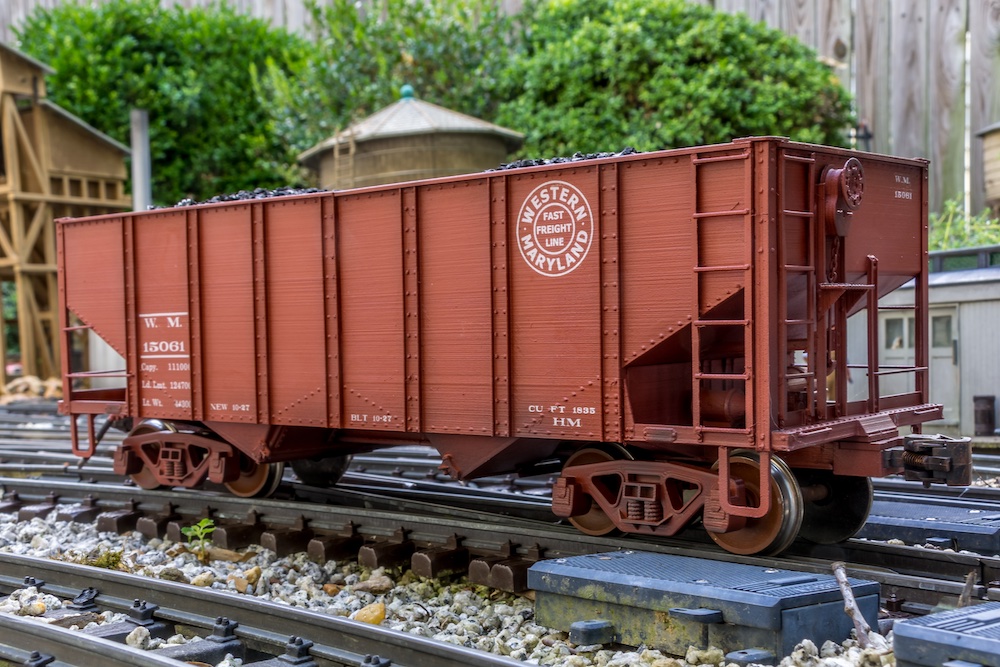Perhaps you don’t have the space to build a layout but still want to build “something.” Maybe your layout is already built but you’re looking to renovate a scene or section. Or there might be a show coming up and you want to highlight a scene or show off an animated feature. The solution to all of these is to build a small module!
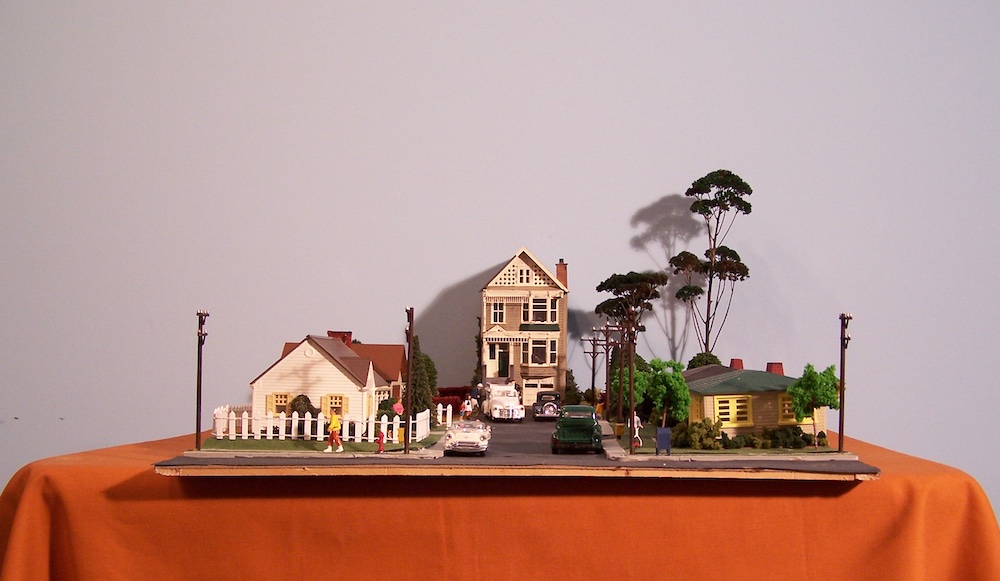
I built one I call the “Neighborhood.” The Neighborhood module contrasts differences between the old and the new homes of a small block. The Victorian mansion was built in the late 1880s by an English couple named Harriet and Henry Oldefolke.
After six generations, only Hugh and Sarah, and Sarah’s brother, Albert, are still living in the home but on land which is only a small parcel of the once large estate. Their neighbors are new generation families living in ranch and Cape Cod style homes built on land sold off from the original Oldefolke holdings.
Size and layout
The arrangement of the structures I wanted to use, the street, and the yards dictated the size of the base, which is made from a 24” x 38” x 3/16” piece of Masonite. I stiffened the Masonite with a ¼” x ½” perimeter and cross stringers so it would not bend. The ¼” space is sufficient to run wires under the module for lighting, sound, or animation.
You may choose to add track to your module, depending on its size. I didn’t add track to the Neighborhood, however.
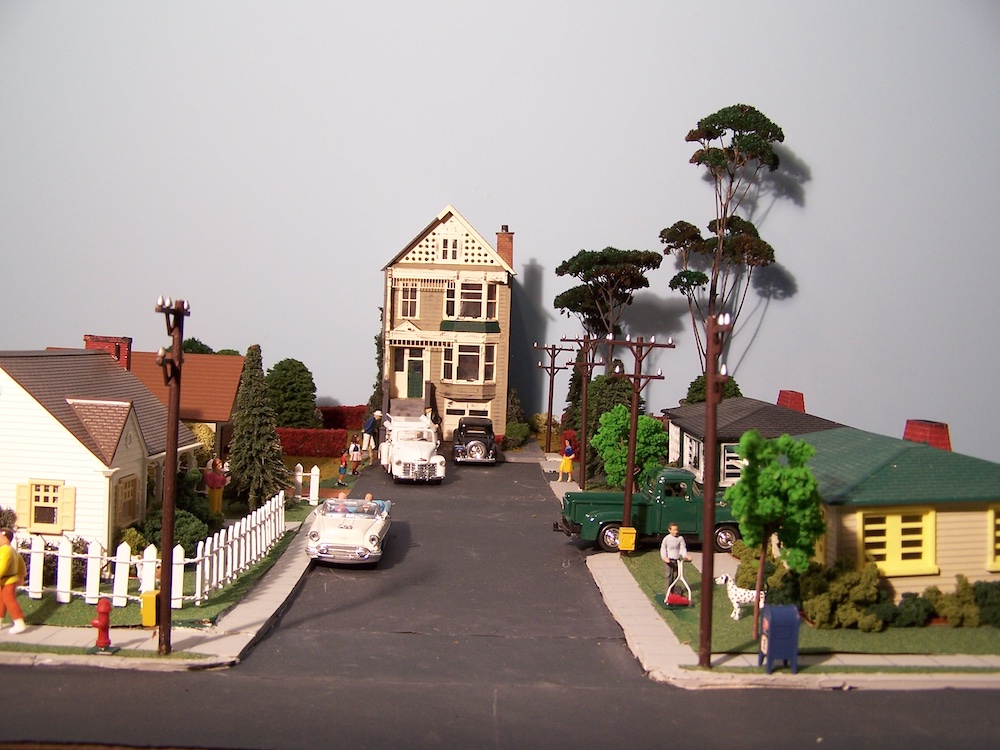
The structures include Lionel’s Dobson Victorian home (No. 6-12967), three Plasticville houses, and an Ameri-Towne garage (No. 595). In order to fit on the module, I cut down the length of the Victorian home by 5¼”. I repainted all of the houses with acrylic paint.
I added a piece of ½” foam panel to which to mount the tall three-story Victorian home, so that it towers above the one-story Plasticville houses. The landscaping slopes away from the Victorian home down to the cross street with progressively thinner 3/8” and ¼” thick foam sections.
I attached the foam to the Masonite base panel with white glue, as other adhesives could melt the foam. (Learn more about adhesives.)
I glued a Bachmann landscape mat (Grass Green, No. 32902) to the foam with white glue. The mat gives a nice manicured look to the lawns.
I added Scenic Express flocking to add dimension around the Victorian mansion. I suggest using a spray adhesive to the flocking. You could also use a static grass applicator.
The base of the street is just layered cardboard, which slopes from the Victorian home’s sidewalk down to the cross street. The street surface is 320B grit wet/dry sandpaper, attached to the cardboard base with contact cement.
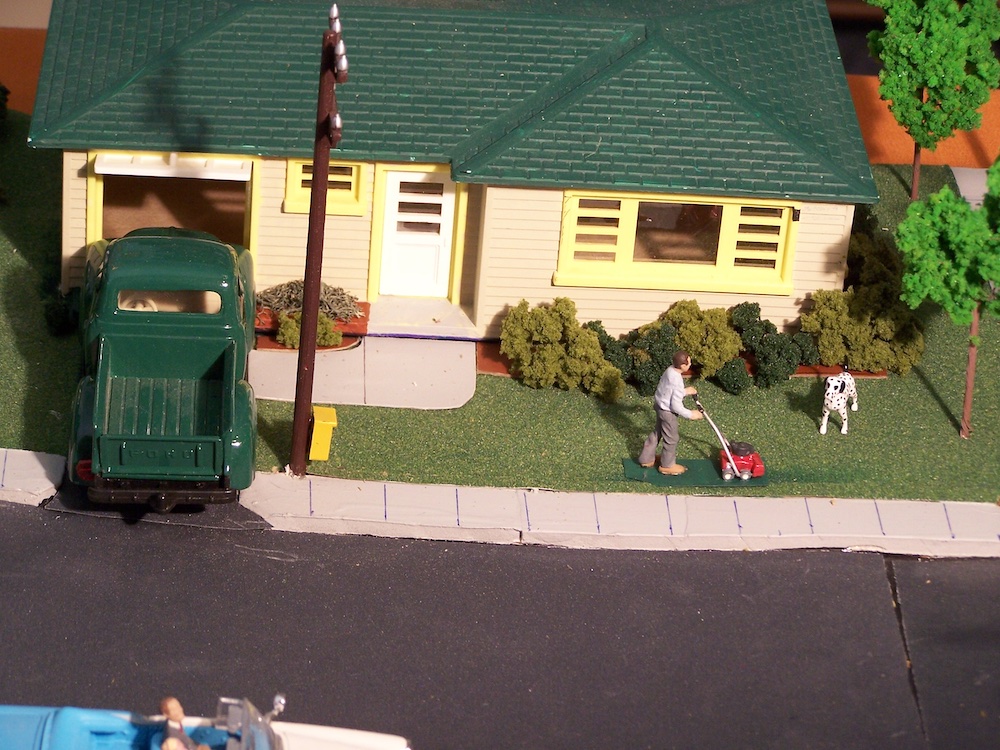
The driveways into the two ranch houses is garnet paper, which is an abrasive paper made from crushed garnet stones. I attached the paper directly to the foam base using white glue. The sidewalks are a material similar to Gatorboard, also attached with white glue. Expansion cracks are simple drawn ink lines.
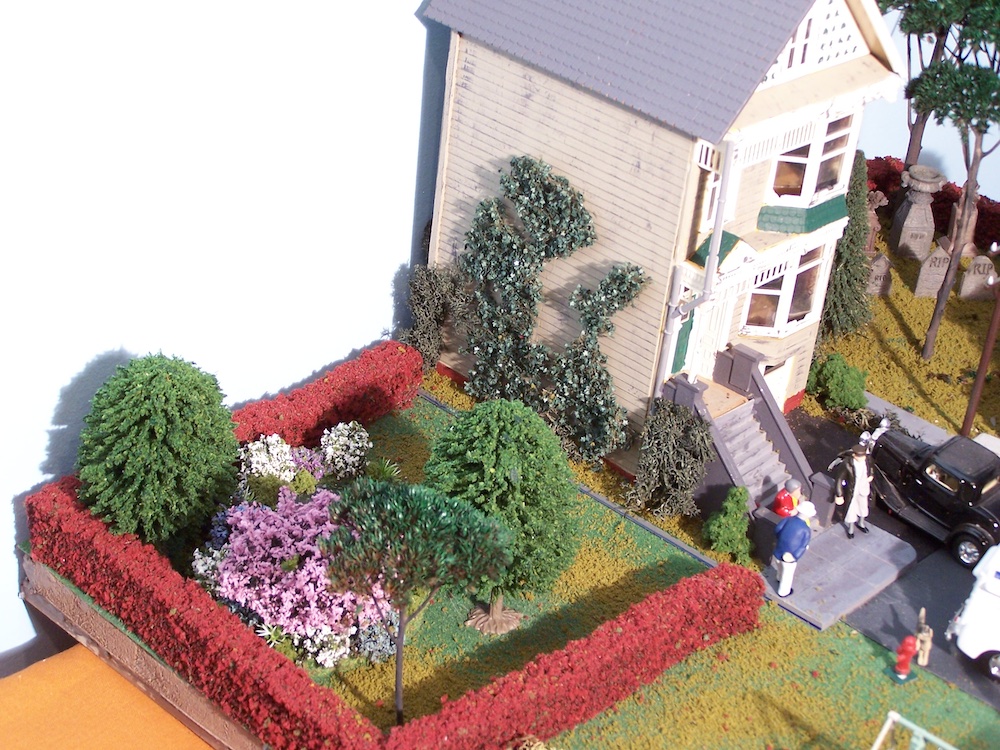
The formal plantings around the Victorian home, including the decorative pond, creeping ivy, and red barberry hedge as well as the cemetery tombstones are from Scenic Express. Other trees are from Life-Like (sold by Walthers) or ones purchased online.
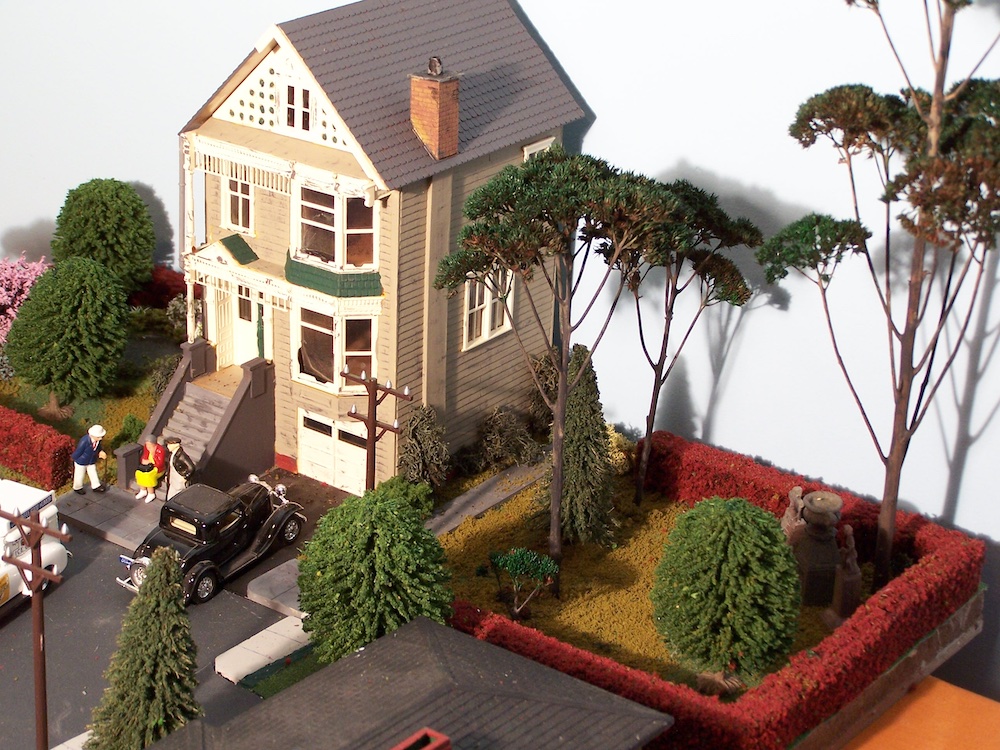
Sedum plants from a friend’s garden form the large trees on the right side of the big house. Sedum plants are prepared for “planting” in three easy steps: Fix the dry harvested plant with hairspray; paint the tree tops with green paint; and paint the trunk and branches with a mix of gray and brown acrylics.
Figures are from Model Power, Life-Like, and Arttista. The diecast vehicles are from several sources, including The Ink Well.
I made a garden “base” with a piece of cardboard I painted brown. While the paint was still wet, I sprinkled dark crushed tea leaves on top to form the “soil.” After everything had dried, I added the garden plants (Scenic Express corn and tomatoes) in rows, and glued the entire piece on top of the grass mat.
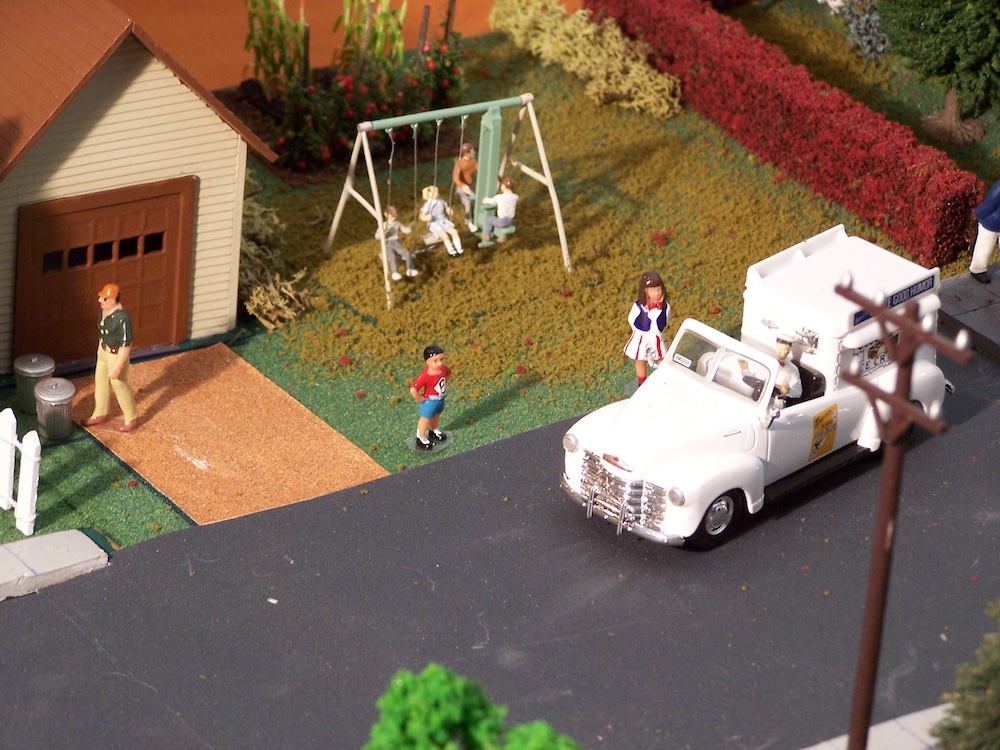
Similarly, I glued the children’s swings (Arttista) to a cardboard base painted green and then flocked. The man with the lawn mower (Arttista) was glued to a piece of clear plastic with Aleene’s Tacky Glue.
All foundation plantings around the Plasticville houses were materials from Woodland Scenics, including lichen and two colors of foliage clusters. These pieces were all attached with tacky white glue.
The “Neighborhood” is easily developed and set up at a low cost yet it appears true to life. The Neighborhood module contrasts differences between the old and the new homes of a small block.
The Oldefolkes and their Victorian home are showing their age, but life goes on in the Neighborhood. We hope that Hugh, Sarah, and Albert will have many more years to enjoy their youthful neighbors.









